January's Visual Primary Source for the History Classroom
Activities for the History Classroom
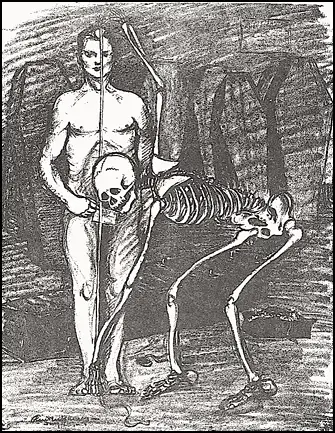
Question: H. J. Glintenkamp's cartoon Conscription appeared in the magazine The Masses in 1917 soon after the United States joined the First World War. Why did Glintenkamp flee the country soon after the cartoon was published?
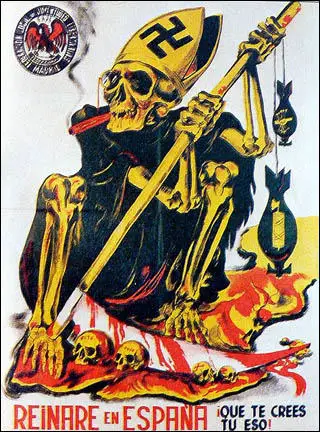
Question: Explain the meaning of the poster produced by the Popular Front government during the Spanish Civil War?
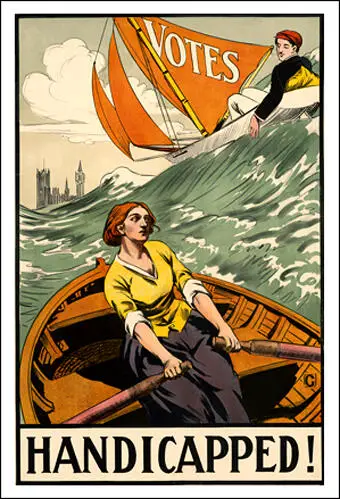
Question: In 1909 Duncan Grant won a poster competition organised by the Artists' Suffrage League (ASL) and the National Union of Suffrage Societies (NUWSS) with Handicapped!. The Common Cause newspaper described it as depicting "a stalwart Grace Darling type struggling in the trough of a heavy sea with only a pair of sculls, while a nonchalant young man in flannels glides gaily by, with a wind inflating his sail - the vote - treating with good temper a subject which often causes bitterness." Grace Darling was a lighthouse keeper's daughter who rescued survivors from the shipwrecked Forfarshire in 1838. What point is Grant making with his poster.
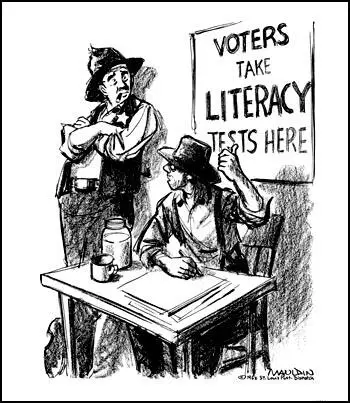
Bill Mauldin, St. Louis Post-Dispatch (15th May 1962)
Question: After the American Civil War many state governments in the Deep South employed literacy tests as part of the voter registration process. These tests were intended to disenfranchise racial minorities. What point is Bill Mauldin making in his cartoon?
How did the 1964 Civil Rights Act and the 1965 Voting Rights Act help racial minorities to vote in elections?
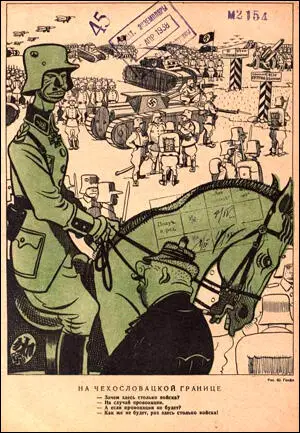
"Why are there so many troops?"
"In case of a provocation."
"What if there's no provocation?"
"How could there not be with so many troops?!"
Question: The cartoon was published in the Soviet Union during the Sudetenland Crisis. On 29th September, 1938. Neville Chamberlain (Britain) and Edouard Daladier (France) agreed to discuss the matter with Adolf Hitler (Germany). that Germany could have the Sudetenland. What is the cartoonist suggesting about the outcome of the negotiations.
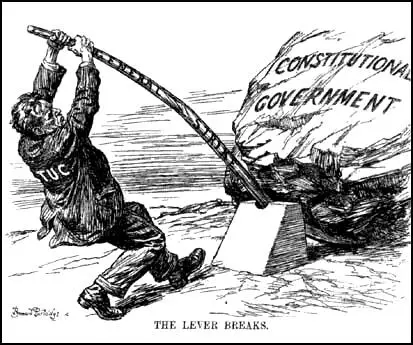
Question: Bernard Partridge is making a comment on the General Strike. What is he saying about the strike? How would a representative of the TUC argue against this point of view?
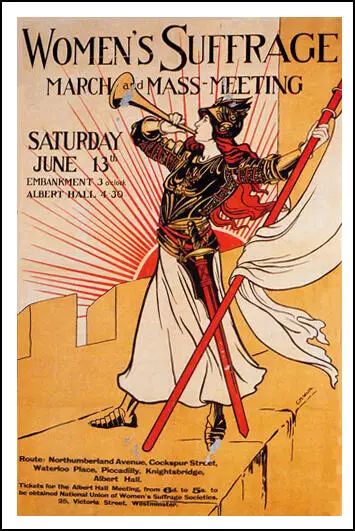
Question: Caroline Watts', The Bugler Girl was used by the National Union of Suffrage Societies (NUWSS) on a lot of publicity material between 1908 and 1913. However, as a result of the Women's Social and Political Union (WSPU) militant campaign they decided to stop using the image. Can you explain why?
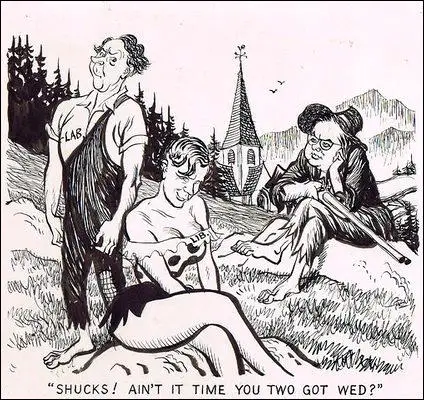
Question: In 1962 Hugh Gaitskell was the leader of the Labour Party and Jo Grimond was the leader of the Liberal Party. Woodrow Wyatt was a a right-wing member of Labour Party. How does the shotgun explain the meaning of the cartoon?
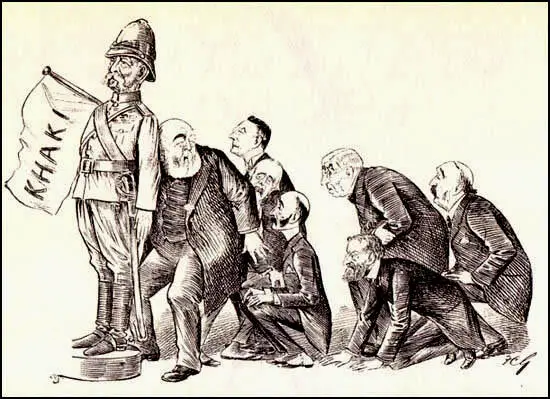
Question: On 25th July, a motion on the Boer War, caused a three way split in the Liberal Party. A total of 40 "Liberal Imperialists" that included H. H. Asquith, Edward Grey, Richard Haldane and Archibald Primrose, Lord Rosebery, supported the government's policy in South Africa. Henry Campbell-Bannerman and 34 others abstained, whereas 31 Liberals, led by David Lloyd George voted against the motion.
Robert Cecil, the Marquess of Salisbury, decided to take advantage of the divided Liberal Party and on 25th September 1900, he dissolved Parliament and called a general election. Lloyd George, admitted in one speech he was in a minority but it was his duty as a member of the House of Commons to give his constituents honest advice. He went on to make an attack on Tory jingoism. "The man who tries to make the flag an object of a single party is a greater traitor to that flag than the man who fires upon it."
Henry Campbell-Bannerman with a difficult task of holding together the divided Liberal Party and it was heavily defeated in the 1900 General Election. Why did this election become known as the "Khaki Election"? What point is Francis Carruthers Gould making?
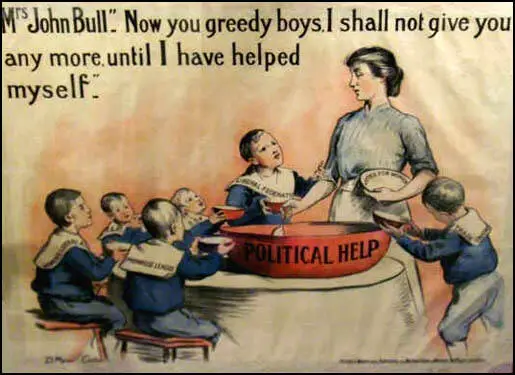
Question: Dora Meeson Coates' poster shows "Mrs John Bull" holding an empty dish labelled "Votes for Women" while six boys - Primrose League, Trade Unions, Liberal Federation, Women's Liberal Association, Social Democratic Federation and Independent Labour Party - clamour for more soup from a large bowl labelled "Political Help". The mother says: "Now you greedy boys I shall not give you any more until I have helped myself." What is the meaning of the poster?
Question: In November 1797, Britain had a budget deficit of £22 million. On several occasions William Pitt the Younger, was in physical danger from angry mobs and he had to be constantly protected by an armed guard. Pitt's health began to deteriorate and newspapers began reporting that the prime minister had suffered a mental breakdown and was insane. Britain's financial problems continued and in his budget of December 1798 William Pitt introduced a new graduated income tax. Beginning with a 120th tax on incomes of £60 and rising by degrees until it reached 10% on incomes of over £200. Why were the rich against the introduction of a graduated income tax? Why did some people believe this cartoon was misleading?
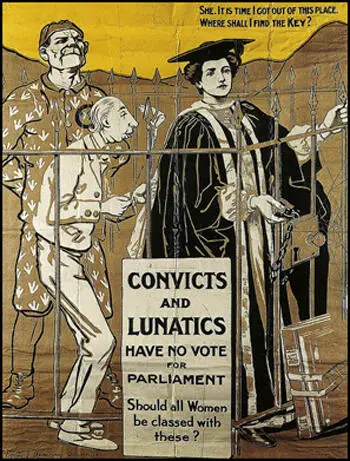
Question: Convicts, Lunatics and Women was one of the most popular posters published by the Artists' Suffrage League (ASL). What point is Emily Harding Andrews making in the poster?
Question: Vicky was the name used by Victor Weisz a Jewish refugee from Nazi Germany. After arriving in England in 1936 he produced cartoons for several newspapers and magazines. During the Second World War Vicky cartoons were liked by Winston Churchill. After 1945 Churchill described him as a dangerous left-winger. What is Vicky saying in this cartoon? Do you think Churchill approved of the cartoon?
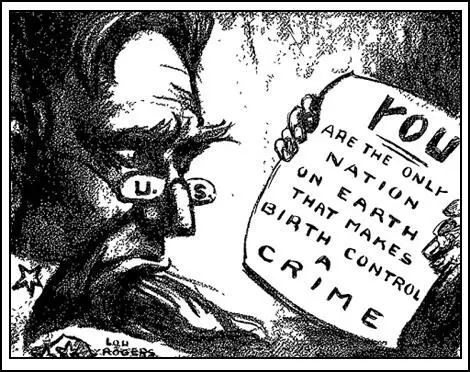
Question: Annie Rogers was the first woman in the United States to make a living as a cartoonist. Why did she sign her cartoons as "Lou" Rogers? What did she mean by "you are the only nation on earth that makes birth control a crime"?
woman (representing Britain) into a French corset (1793)
Question: How does the date help to explain the meaning of James Gillray's cartoon.

